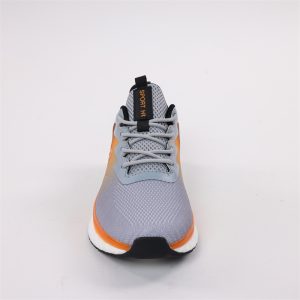Introduction: Shoes are an essential part of our daily attire, providing comfort and style to our feet. In the market, you may come across various terms like “top grade shoes” and “OEM grade shoes.” Understanding the meaning and differences between these terms can help you make informed choices when purchasing footwear. This article aims to clarify the definitions of top grade shoes and OEM grade shoes, highlighting their characteristics and comparing them.
Defining Top Grade Shoes: Top grade shoes refer to footwear that is considered to be of superior quality and craftsmanship. They are meticulously designed and manufactured using high-quality materials and advanced production techniques. Top grade shoes are often associated with renowned brands or exclusive collections known for their exceptional comfort, durability, and style. These shoes are typically characterized by their attention to detail, intricate designs, and premium materials.
Exploring OEM Grade Shoes: OEM stands for Original Equipment Manufacturer grade shoes are produced by manufacturers who specialize in producing footwear for other companies or brands. These shoes are made according to the specifications provided by the client, which can include design, materials, and quality standards. OEM grade shoes may have similar characteristics to top grade shoes, but they are not necessarily branded or associated with a well-known name. These shoes are often sold without any specific brand label and are intended for bulk distribution or use as private label products.

Comparing Top Grade Shoes and OEM Grade Shoes:
-
Branding and Recognition: Top grade shoes are usually associated with established brands that have a reputation for excellence. They often carry recognizable logos, trademarks, or branding elements. On the other hand, OEM grade shoes are produced for other companies, meaning they may lack distinct branding or recognition.
-
Quality and Materials: Top grade shoes prioritize the use of premium materials, ensuring superior comfort, durability, and longevity. Manufacturers pay attention to every detail, employing skilled craftsmanship and advanced technologies. OEM grade shoes can vary in quality, depending on the specifications provided by the client. While they can meet certain quality standards, they may not always match the level of craftsmanship and materials used in top grade shoes.
-
Price Range: Due to the reputation and craftsmanship associated with top grade shoes, they are often priced higher compared to OEM grade shoes. The premium materials, meticulous design, and branding contribute to their elevated cost. In contrast, OEM grade shoes may be more affordable as they are produced for bulk orders or specific brand requirements.
Conclusion: In summary, top grade shoes represent footwear of exceptional quality, renowned for their craftsmanship, materials, and attention to detail. They are often associated with high-end brands and come with a higher price tag. On the other hand, OEM grade shoes are produced by manufacturers for other companies according to their specifications, lacking specific branding or recognition. While OEM grade shoes can meet quality standards, they may not always match the level of excellence found in top grade shoes. Understanding these terms can help consumers make informed decisions when purchasing shoes that suit their preferences and budget.

